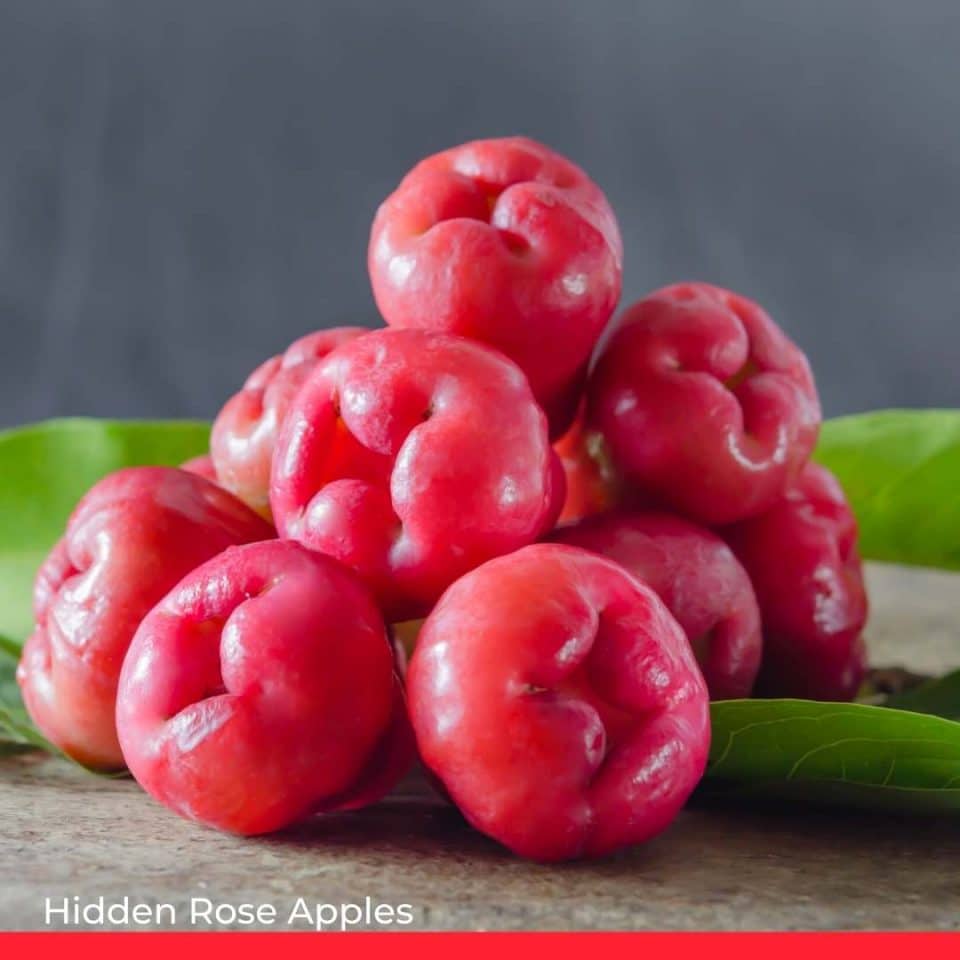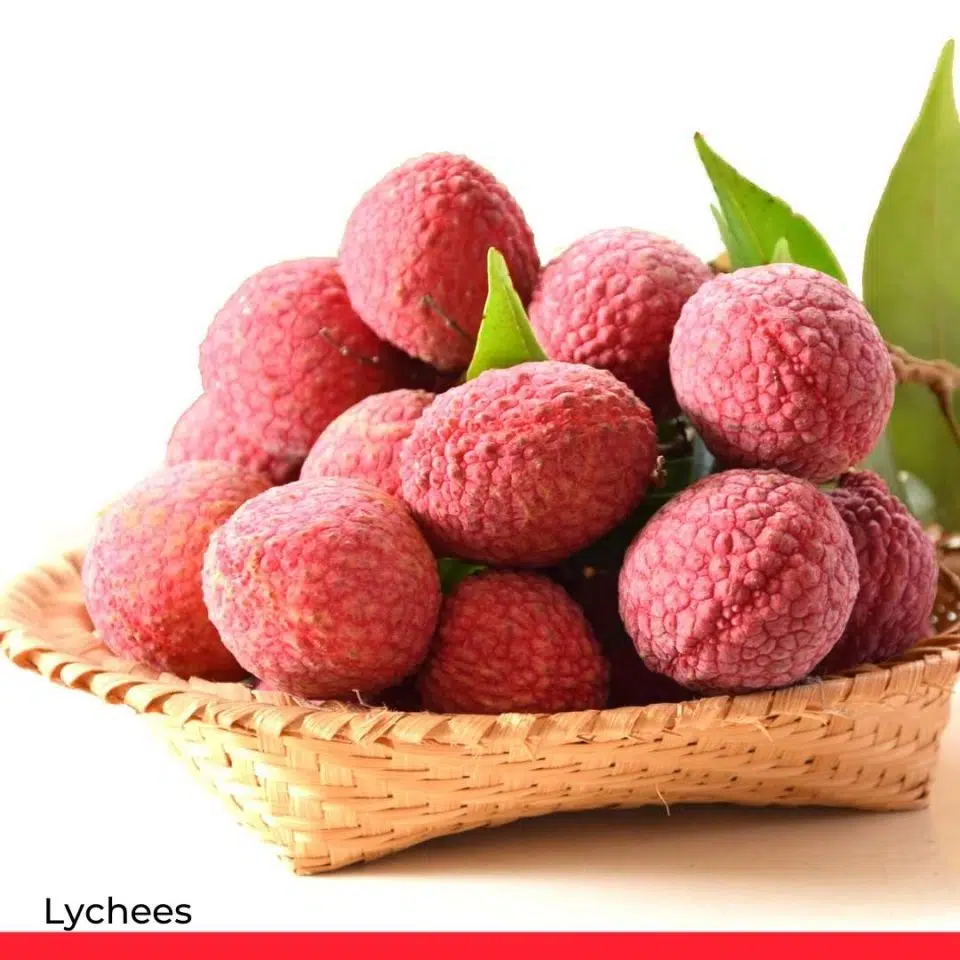25 Naturally Pink Foods (With Pictures!)

Pink foods can add a splash of vibrant color to your dishes. From delicate millennial pinks to rich fuchsias, many are specially bred variations of our everyday favorites.
Choose them to match your tableware, your outfit, or your wallpaper. Or tone them beautifully with other ingredients to create rainbow-themed dishes. You’ll be surprised at how pink foods can add extra interest and glamor to the most mundane recipes.
So join us as we enter the enchanting world of pink foods!
1. Beets

Beets are very versatile and can infuse a range of dishes with their beautiful deep pink juices, whether cooked or raw. Sliced roots make a tasty snack and can also add an exciting twist to mixed salads.
They can be roasted or sautéed, creating a flavorful rose-pink hummus when puréed.
Their intense color is due to the high levels of valuable antioxidants they contain. For thousands of years, they’ve been prized for their health-giving properties.
2. Pink Radicchio

Pink radicchio is a variety of chicory which is less bitter than some of its cousins. In the USA, Radicchio di Chioggia is the easiest to find. With its cabbage-like bulb of thick purple-pink leaves, run through with thick white veins, it can be enjoyed raw, sautéed, or roasted.
Add a few leaves to turn your smoothies millennial-pink, but include plenty of sweeter ingredients to balance the bitterness.
Pink radicchio provides a wealth of health goodies, too. These include vitamins E, K, folate, copper, and iron.
Check out here our favorite radicchio recipes.
3. Ornamental Cabbages and Kale

Pink-hued ornamental cabbages and kale can be used in the kitchen, but bear in mind that they were bred for their looks, not their taste.
The leaves can be chewier and more bitter than culinary varieties. So while they contain the same nutrient profile as other brassicas, it’s perhaps wisest to keep them for decoration or garnishes. Or even better, leave them in the ground to add color and interest to your flower beds.
4. Pink Radishes

The skin of pink radish varieties, such as the China Rose, Pusa Gulabi, watermelon radishes, and Pink Beauty, can range in color from pale, almost translucent blush to vibrant fuchsia shades.
They can be used in all the same ways as their scarlet cousins, adding a peppery crunch to salads and dipping selections. What’s more, they make great pickles!
5. Chinese Pink Celery

This tasty Asian celery is far easier to grow than regular European-type celery. The crunchy texture, slightly sweet flavor, and vibrant bubble gum pink color combine to make it a great way to include one more rainbow color to your salads, stir-fries, or veggie displays.
It provides the body with vitamin K, potassium, magnesium, calcium, manganese, and immunity-boosting antioxidants. In addition, the leaves, which are also edible, contain vitamin A.
6. Pink Carrots

Slender pink carrots are pinky-red when raw. This transmutes to a bright coral shade when cooked. When they’re harvested young, baby pink carrots are noticeably more tender than more mature ones.
Pink carrots have a similar flavor to orange carrots, and you can prepare them in all the same ways.
While all carrots contain vitamins K and B6, the deep pink coloring indicates that they provide higher levels of the powerful antioxidant lycopene.
7. Rhubarb

Rhubarb is the edible stalk of the rhubarb plant, and the color can range from rosy pink to deep crimson. Rhubarb has an intensely tart flavor, so it is typically cooked with sugar, and partnered with sweet sauces, ice creams, or baked into pies and crumbles.
Its sharpness contrasts nicely with pork or game, or other rich dishes.
Related: Rhubarb Pie Recipe
Rhubarb is high in vitamins C and B-complex, fiber, calcium, and potassium. It’s reputed to boost metabolism and support weight loss. However, never eat rhubarb roots or leaves. They contain elevated levels of oxalic acid, which is highly toxic.
8. Brown Turkey Figs

Brown Turkey Figs are a large variety with purple to green skin and meltingly sweet, rose-pink flesh dotted with pale seeds.
Related: Dalmatian Fig Tarte Recipe
Fresh figs provide plenty of vitamin B6, protein, calcium, phosphorus, and iron, so they’re a healthy addition to any fruit bowl or cheese board.
9. Dragon Fruits

Dragon fruits, also known as pitayas or strawberry pears, are a striking tropical fruit that looks like they would indeed make great food for dragons.
They’re now grown and admired worldwide for their brilliant fuchsia skin, green scales, and pale, rosy interior. You can add dragon fruit to fruit salads, use them in smoothies and desserts, or enjoy them on their own as a delightful, healthy treat.
10. Guavas

These small, plum-like fruits have different colored flesh, but the most visually appealing is a mix of golden yellow and pink. Inside, the pinky flesh is studded with tiny seeds.
You can eat guavas from the peel, toss chunks into fruit salad, or use them to make pastes, jellies, and ice creams.
Guava is a popular ingredient in South American desserts and other Latin American countries. One of Brazil’s most famous cake – Bolo de Rolo – is made with sweetened guava paste, as well as Puerto Rico’s popular brazo gitano cake.
They contain 5 times the vitamin C found in oranges and are also high in vitamins A and B1.
11. Hidden Rose Apples

The skin of these unusual apples has a pinkish blush on a beautiful yellow skin flecked with pale dots.
What makes them unique, though, is the deep rose-red flesh which is crisp and firm, offering a perfect balance of sweet and sharp. Hidden rose apples keep their firmness when cooked, making them an excellent choice for pies, cobblers, and sauces.
12. Koshu Grapes

These soft, deep reddish pink grapes are grown primarily in a single valley in Japan. As they’re most typically used to make an elegant white wine containing hints of fruits and jasmine, this is how you’re most likely to encounter them.
Other varieties of pink grapes are used to produce rosé wines that we’re all familiar with.
13. Lilly Pilly Berries

Native to Southeast Asia and Australia, these tiny berries have firm, shiny skin that ranges from pink-red to vivid magenta. Surprisingly, each of the many varieties has its own distinctive flavor. They can be sweet-tart, musky, or metallic, sometimes with fruity, spice-filled notes.
Aboriginal Australians refer to Lilly Pilly berries as “medicine berries” and believe they help ward off colds and infections. This is likely correct as they contain high levels of vitamin C, anthocyanins, folate, and calcium.
14. Lychees

The lychee, native to Southeast Asia, is a sweet fruit with a slight floral tone. It is native to Southeast Asia.
The crimson ‘crocodile’ skin is easy to open with a thumbnail, revealing the succulent blush-pink or white flesh and dark seed hidden within. Lychees are great partners for other exotic fruits such as mango, coconut, bananas, and pineapple.
15. Okinawa Pink Okra

Recently introduced into the US from Okinawa, Japan, this deep fuchsia-colored veggie will make an exciting addition to your repertoire of vegetable dishes.
The spectacular bubblegum pink pods provide an incredible flavor and exceptional levels of antioxidants.
16. Pink Bananas

While all pink foods look beautiful, pink bananas must be a strong contender for the loveliest. But, unfortunately, they are only ‘technically’ edible.
This is because although their (white) flesh is sweet, they’re also incredibly seedy. So perhaps it’s better to keep your pink bananas for display only – and continue snacking on your standard yellow ones.
17. Pink Grapefruits

Big, juicy, pink grapefruit is sweeter than standard yellow varieties and far less bitter. Like other pink fruits, it contains high levels of vitamins A and C. And another advantage of pink grapefruits is that they’re low on the glycemic index, so they can help stave off hunger pangs.
18. Pink Lady Apples

With their glowing pink skin and creamy white flesh, Pink Ladys are sweet-tart apples found everywhere. They’re perfect for snacking, juicing, and baking.
19. Pink Lemonade Blueberries

Pink lemonades are far sweeter than standard blueberries and have a unique lemony flavor. These tiny gems are at their most delicious when eaten fresh off the bush, tossed into fruit salads, or added to baked goods and desserts.
And unlike common blueberries, the pink lemonade variety won’t leave dark stains on your hands or kitchen surfaces.
Finally, they contain the same powerful antioxidants as blueberries and are high in vitamins C and K, fiber, and manganese.
20. Pink Peppercorns

Pink peppercorns are actually a pink fruit! These dried rose-colored berries are similar to black pepper, with a mild, sweet peppery taste.
21. Pink Oyster Mushrooms

These gorgeous salmon-pink mushrooms are becoming increasingly fashionable with top chefs because of their exciting taste, reminiscent of seafood. Buy them young because as they mature, the color fades while the aroma intensifies; and be warned, it’s not very nice.
22. Prickly Pears

The inside of ripe prickly pears is soft, sweet, and juicy. The fragrance is like melons, kiwis, and even bubblegum. Prickly pear fruit is an excellent source of vitamin C, calcium, fiber, kaempferol, and various antioxidants.
23. Ham and Bacon

Ham is not only a good protein source, it’s also full of iron and low in saturated fat. While industrial sliced ham tends to have a high water content, regional specialties are produced worldwide. Italian prosciutto, Spanish jamón, and Westphalian ham are especially famous.
24. Himalayan Salt

Pink Himalayan Salt is a pink-hued salt mined from the mountains of Nepal and Pakistan. Use it like regular salt. It’s ideal for finishing and garnishing dishes because of its attractive flamingo-pink hue.
Himalayan salt is packed with trace minerals such as calcium, iron, zinc, chromium, magnesium, and sulfate, giving it its spectacular color.
25. Pink Banana Squashes

The thick salmon-pink rind of this pink banana squash conceals salmon-pink flesh. But, like all squashes, it’s high in fiber and packed with nutrients, including vitamins A, B, and C, calcium, and iron.
Related: 20 Naturally Red Foods

Related: 20 Naturally Black Foods

Related: 20 Naturally Orange Foods


